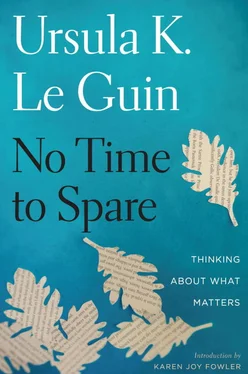The sole imperfection of the egg spoon is that it’s so small it gets lost. Horn spoons are larger, but the beautiful horn spoon my daughter gave me finally wore out, its edge becoming coarse and fibrous. Replacement can be a problem; most Americans don’t eat their eggs from the shell, and the implement has become rare and hard to find. When I see one, I acquire it. My current egg spoon is stainless steel; on the handle are the letters K L M. I will not go into how we came to own this spoon.
You see what I mean about difficulty. Eating an egg from the shell takes not only practice but resolution, even courage, possibly willingness to commit crime.
If you are in the whacking mood, the first whack of the knife on the shell is decisive. A firm whack on a good shell in the right place decapitates the egg cleanly with one blow—ideal. But some eggshells are feeble and crumbly, and sometimes your aim is tentative or faulty (after all, this is something you have to do before breakfast). If you hit too high, the opening isn’t big enough; too low, you get into yolk, which you don’t want to do yet. So maybe you choose to tap instead of whacking—nowhere near as exciting, but you have more control of the outcome.
So now you have opened your egg. You stick the spoon right down into it, but not too suddenly, or the yolk will well up and dribble wastefully down the outside of the shell. The three-and-a-half-minute egg white is barely firm, while the yolk has thickened just enough to make a beautiful golden sauce for the white. Your job is to mix the two nicely so you get a balance of yolk and white in each small spoonful, while not destroying the delicate little bowl you’re eating from, the eggshell. This takes attention.
The more complete the attention, the more you actually taste the egg.
It may be apparent by now that this whole blog is a subtle blow against double-tasking, and a paean to doing one single thing with, as the Bible puts it, “all thy might; for there is no work, nor device, nor knowledge, nor wisdom, in the grave, whither thou goest.”
Nor is there any breakfast there. The grave is without egg.
The flavor of a fresh soft-boiled egg is extremely subtle. I like salt and pepper on a fried egg but nothing at all on a boiled egg. It is completely satisfactory in and by itself. If a little butter from the muffin gets into it, that’s fine too.
The soft-boiled-egg experience is the same every morning and never the same. It remains endlessly interesting. It is invariably delicious. It delivers a small, solid dose of high-quality protein. Who could ask for more?
Of course, I’m very lucky: I can get toxin-free eggs at our co-op from local farmers who don’t cage their birds in pestholes and don’t feed them on carrion. The eggs are brown, with strong shells and orange yolks, not the weak, pallid things laid by hens kept in filth and torment all their lives. The Oregon Legislature has at last decided to ban poultry batteries, hurray—the ban to take effect in 2024, unhurray. The lobbies who run our lives demand that torture, ordure, and disease continue for thirteen more years. I will not live to see the birds go free.
October 2011
I VISITED A great cathedral this week. It’s situated in a mixed industrial/small business/residential area not far from the Portland Airport, an odd place for a cathedral. But it has a huge congregation and is full of people, not just on Sundays but every day of the week.
And it’s big. Nôtre-Dame de Paris covers about 67,000 square feet. This one is nearly twice as big, 108,000 square feet, two full city blocks (and its overflow, adjunct building across the river covers 94,000 square feet).
Nôtre-Dame, with its towers, is much taller, and is built of stone all carved with saints and gargoyles, and is endearingly ancient and beautiful. This one looks rather unimpressive as you approach it, partly because there are buildings near it and you can’t really get a view of it, and partly because it wasn’t built long ago to celebrate and embody spiritual worship, but recently, in dire need, for a specific material purpose. Still, I wouldn’t discount a very large element of the spirit in the building of it.
From the outside it looks like a particularly huge warehouse, but it hasn’t the strangely menacing, fortresslike look of the great windowless citadels of consumerism, Walmart and the rest. When you get inside, you see the cathedral. The high, airy entrance hall leads you first, on an elegantly stone-tiled floor with little bronze decorations set in here and there, to an area of offices and cubicles. Most churches hide their administrative department, but this one puts it right out front. The walls are blond wood, everything is spacious and handsome. Like the high nave of Nôtre-Dame, the startlingly high steel-braced wooden ceiling soars above all the small human activity down on the floor beneath. In the old cathedral that height creates a great, mysterious, upper space of shadows. But the space beneath this vault is luminous.
It wasn’t till I entered the interior, the cathedral proper, that I understood why they’d built the ceiling so high. As there should be, there are great doors to open into the sacred space. And as a sacred space will do, the first sight took my breath away. I stood silent. I remembered what the word awe means.
Much of the interior of the huge building is visible from that doorway, or would be except that the whole floor is covered with immense, towering blocks and piles and stacks of crates, cartons, boxes, and containers, arranged in gigantically severe order, with wide aisles between each tower or bay. Only down the aisles can you see the far walls in the far distance. There are no permanent walls or divisions. The immense, splendidly cantilevered ceiling stretches serenely above it all. The air is cool, fresh, and clean, with the faintest smell of garden stuff, fresh vegetables. Vehicles run quietly up and down the aisles, miniforklifts and the like, looking quite tiny among the high blocks and stacks, constantly busy at moving crates and boxes, bringing in and taking out.
Well, it isn’t a cathedral. That was a metaphor. It’s just a warehouse, after all.
But what kind of warehouse stores nothing to sell? Nothing, not one item in all these (literally) acres of goods, is or ever will be for sale.
Actually, it’s a bank. But not the kind of bank where money is the only thing that happens.
Here is where money doesn’t happen.
This is the Oregon Food Bank. Every box in the great cubical stacks between the aisles, every carton, every can, every bottle, every crate, holds food. Every carton, every can, every pound, every ounce of that food will be given to the people of Oregon who haven’t the money to buy what they need to live on.
It is a cathedral, after all. The cathedral of hunger.
Or should I say the cathedral of generosity? Of compassion, or community, or caritas? It comes to the same thing.
There are people who need help.
There are people who deny it, saying that God helps those who help themselves and the poor and the unemployed are merely shiftless slackers sponging on a nanny government.
There are people who don’t deny poverty, but they don’t want to know about it because it’s all so terrible and what can you do?
And then there are people who help.
This place is the most impressive proof of their existence I ever saw. Their existence, their efficiency, their influence. This place embodies human kindness.
In, of course, the most unspiritual, lowly, humdrum, even gross way. In a thousand cans of green beans, in towers of macaroni boxes, in crates of fresh-picked vegetables, in cold side-chapel refrigerators of meat and cheese… In hundreds of cartons with improbable names of obscure beers on them, donated by the brewers because beer cartons are particularly sturdy and useful for packing food… In the men and women, employees and trained volunteers, operating the machinery, manning the desks, sorting and packaging the fresh produce, teaching survival skills in the Food Bank classrooms, kitchens, and gardens, driving the trucks that bring food in and the trucks that take food out to where it’s needed.
Читать дальше












